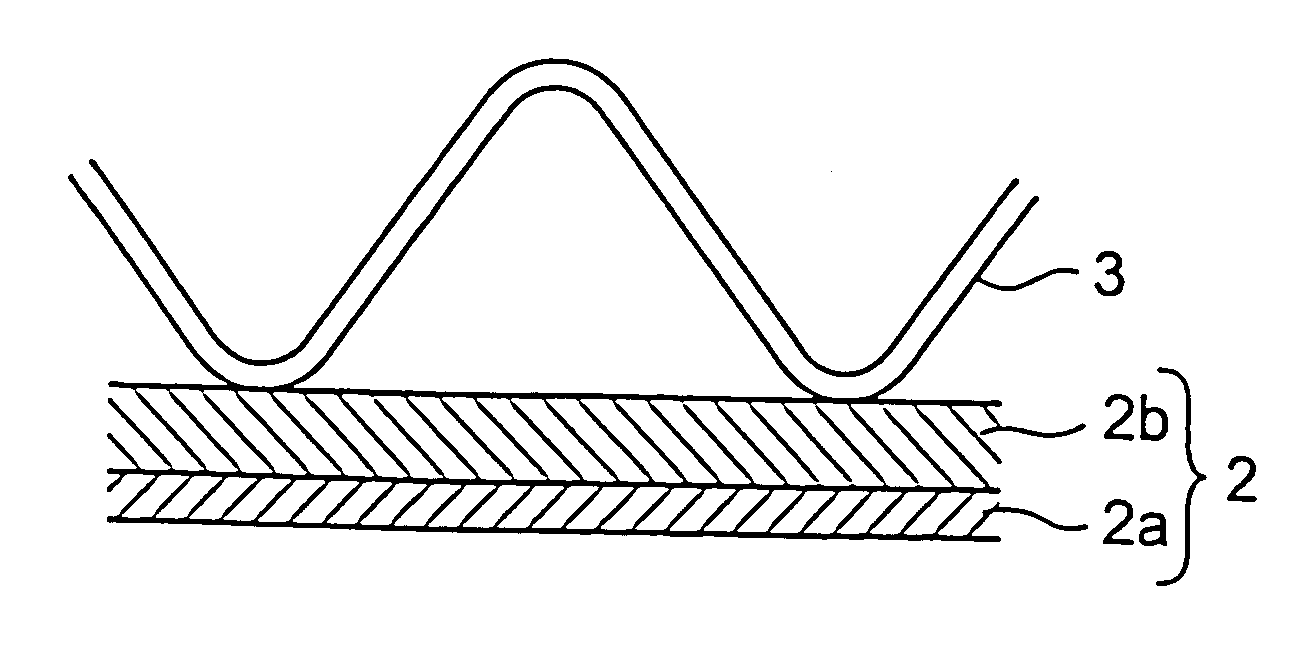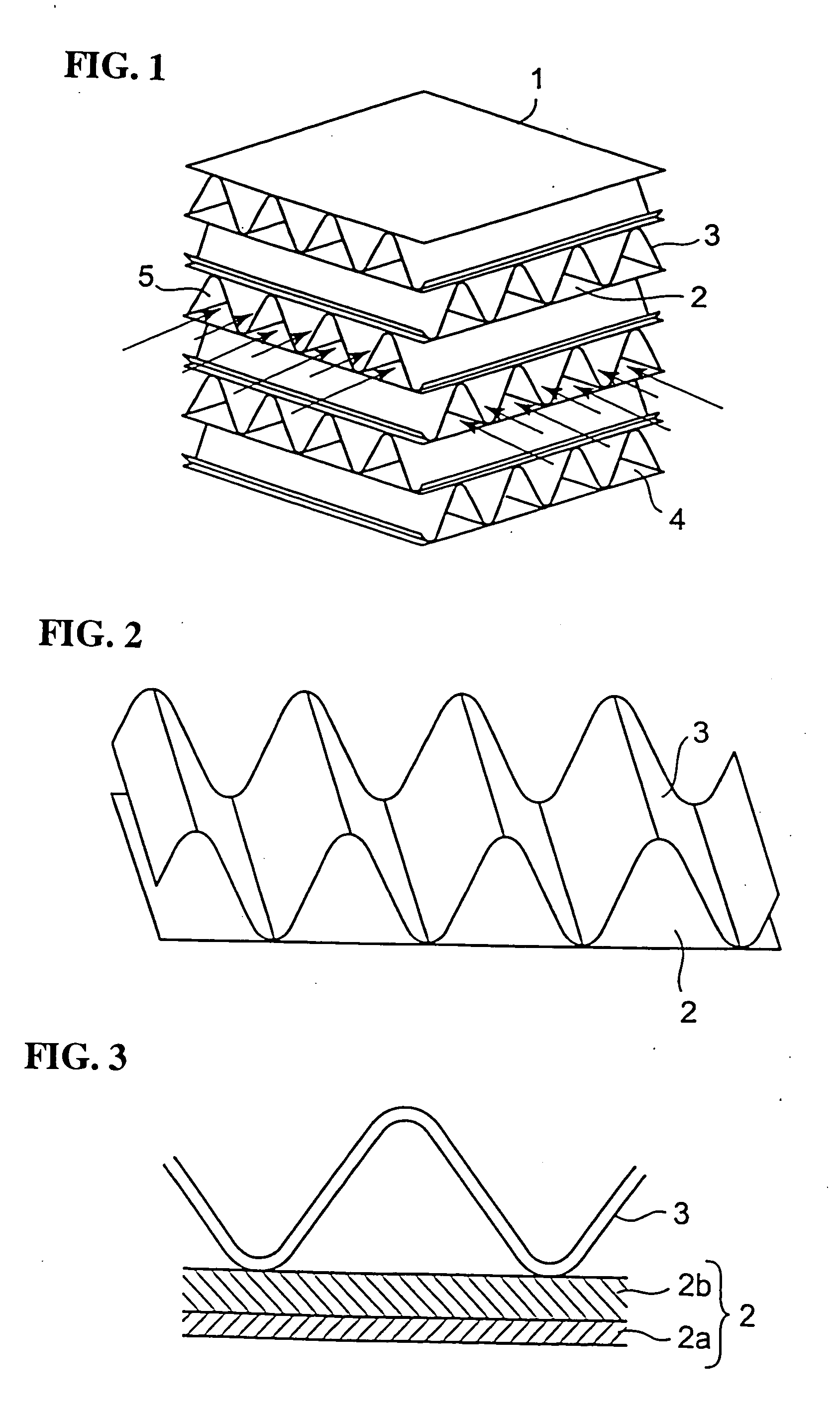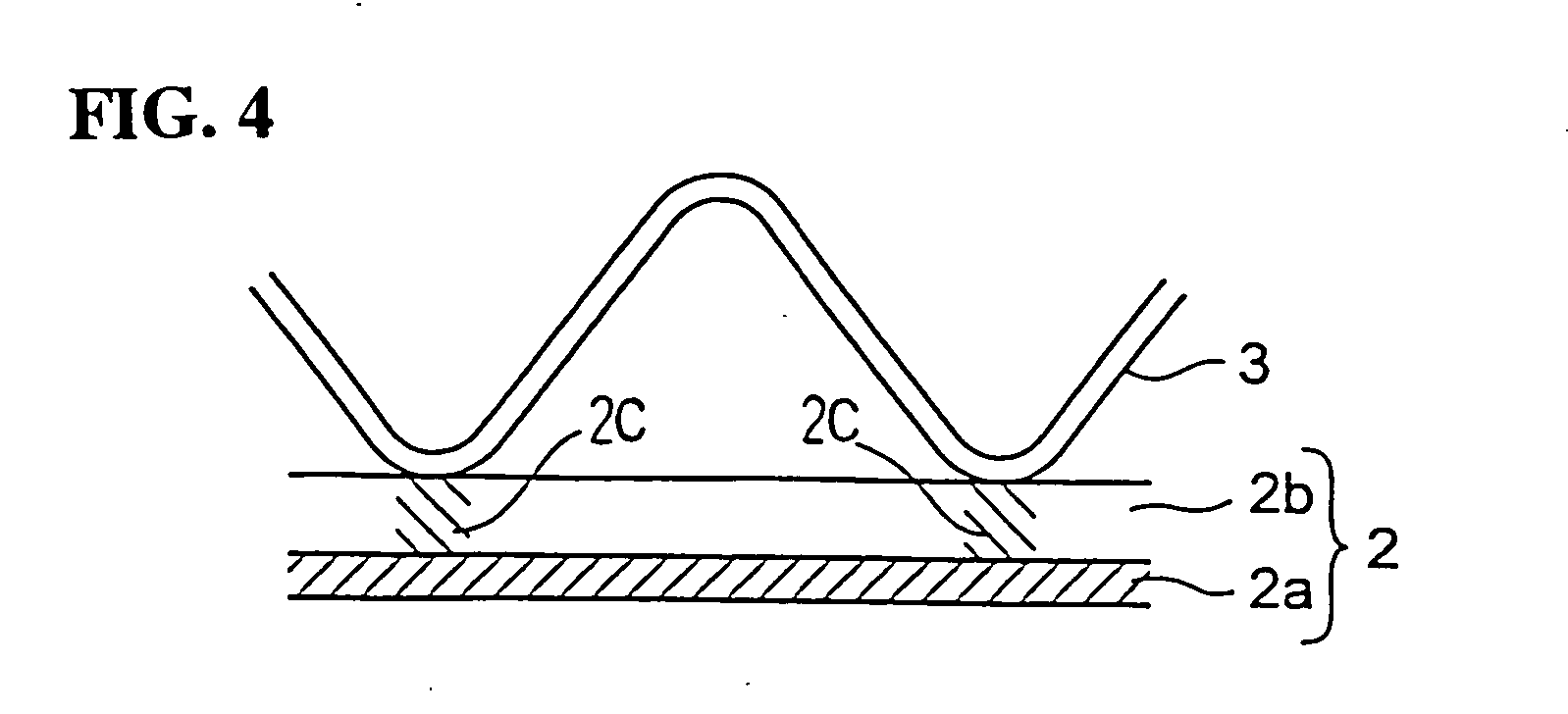Total heat exchanging element
a technology of heat exchange element and total amount, which is applied in the field of total heat exchange element, can solve the problems of limited total amount of chemicals capable of application or impregnation to a unit area of the base material of the partition member, difficult to achieve the exchange efficiency higher than with a moisture absorbent alone, and only a limited choice of flame retardants, so as to improve the effect of moisture permeation and improve the efficiency of heat exchange and flame retardancy
- Summary
- Abstract
- Description
- Claims
- Application Information
AI Technical Summary
Benefits of technology
Problems solved by technology
Method used
Image
Examples
first embodiment
[0025] A total heat exchanging element according to a first embodiment of the present invention will be described in more detail with reference to the accompanying drawings.
[0026]FIG. 1 shows the total heat exchanging element 1 according to the first embodiment of the present invention. The total heat exchanging element 1 is composed of partition members 2 and spacing members 3 which are laminated alternately. The partition members 2 have a flat shape. The spacing members 3 have a corrugated section of serrate shape, sinusoidal shape, or the like. The spacing members 3 are formed so that their projections onto the planes of the partition members 2 coincide with the partition members 2. As shown in FIG. 2, a unit component member is fabricated by laminating a single partition member 2 and a single spacing member 3 so as to make contact at the convex portions of the corrugated shape, and fixing the same by such means as adhesive bonding. Such unit component members are laminated with...
second embodiment
[0047]FIG. 4 is a sectional view showing the total heat exchanging element according to a second embodiment of the present invention. This sectional view is of the unit component member in FIG. 2, taken along a direction perpendicular to the airflow path formed by the spacing member.
[0048] In this total heat exchanging element 1,a flame retardant 2c (guanidine-salt flame retardant) is applied to specified areas of the base material 2a of the partition member 2, where the partition member 2 is in contact with the spacing member 3, and a moisture absorbent 2b to the other areas. The moisture absorbent 2b consists chiefly of an alkali metal salt such as lithium chloride and calcium chloride. The spacing member 3 is made of flame-retarded paper which is impregnated with a guanidine-salt flame retardant such as guanidine chloride and guanidine sulfamate. The partition member 2 is pasted to the same spacing member 3 as that of the first embodiment by an adhesive (such as vinyl acetate ty...
PUM
| Property | Measurement | Unit |
|---|---|---|
| Permeability | aaaaa | aaaaa |
Abstract
Description
Claims
Application Information
 Login to View More
Login to View More - R&D
- Intellectual Property
- Life Sciences
- Materials
- Tech Scout
- Unparalleled Data Quality
- Higher Quality Content
- 60% Fewer Hallucinations
Browse by: Latest US Patents, China's latest patents, Technical Efficacy Thesaurus, Application Domain, Technology Topic, Popular Technical Reports.
© 2025 PatSnap. All rights reserved.Legal|Privacy policy|Modern Slavery Act Transparency Statement|Sitemap|About US| Contact US: help@patsnap.com



